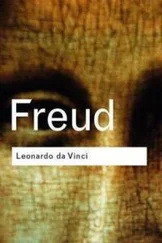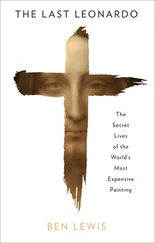Leonardo da Vinci - The Notebooks of Leonardo Da Vinci. Complete
Здесь есть возможность читать онлайн «Leonardo da Vinci - The Notebooks of Leonardo Da Vinci. Complete» — ознакомительный отрывок электронной книги совершенно бесплатно, а после прочтения отрывка купить полную версию. В некоторых случаях можно слушать аудио, скачать через торрент в формате fb2 и присутствует краткое содержание. Жанр: foreign_prose, foreign_home, visual_arts, foreign_antique, на английском языке. Описание произведения, (предисловие) а так же отзывы посетителей доступны на портале библиотеки ЛибКат.
- Название:The Notebooks of Leonardo Da Vinci. Complete
- Автор:
- Жанр:
- Год:неизвестен
- ISBN:нет данных
- Рейтинг книги:3 / 5. Голосов: 1
-
Избранное:Добавить в избранное
- Отзывы:
-
Ваша оценка:
- 60
- 1
- 2
- 3
- 4
- 5
The Notebooks of Leonardo Da Vinci. Complete: краткое содержание, описание и аннотация
Предлагаем к чтению аннотацию, описание, краткое содержание или предисловие (зависит от того, что написал сам автор книги «The Notebooks of Leonardo Da Vinci. Complete»). Если вы не нашли необходимую информацию о книге — напишите в комментариях, мы постараемся отыскать её.
The Notebooks of Leonardo Da Vinci. Complete — читать онлайн ознакомительный отрывок
Ниже представлен текст книги, разбитый по страницам. Система сохранения места последней прочитанной страницы, позволяет с удобством читать онлайн бесплатно книгу «The Notebooks of Leonardo Da Vinci. Complete», без необходимости каждый раз заново искать на чём Вы остановились. Поставьте закладку, и сможете в любой момент перейти на страницу, на которой закончили чтение.
Интервал:
Закладка:
156
OF PAINTING.
Among objects in various degrees of shade, when the light proceeds from a single source, there will be the same proportion in their shadows as in the natural diminution of the light and the same must be understood of the degrees of light.
157
A single and distinct luminous body causes stronger relief in the object than a diffused light; as may be seen by comparing one side of a landscape illuminated by the sun, and one overshadowed by clouds, and so illuminated only by the diffused light of the atmosphere.
THIRD BOOK ON LIGHT AND SHADE
Definition of derived shadow (158. 159).
158
Derived shadow cannot exist without primary shadow. This is proved by the first of this which says: Darkness is the total absence of light, and shadow is an alleviation of darkness and of light, and it is more or less dark or light in proportion as the darkness is modified by the light.
159
Shadow is diminution of light.
Darkness is absence of light.
Shadow is divided into two kinds, of which the first is called primary shadow, the second is derived shadow. The primary shadow is always the basis of the derived shadow.
The edges of the derived shadow are straight lines.
[Footnote: The theory of the ombra dirivativa_—a technical expression for which there is no precise English equivalent is elaborately treated by Leonardo. But both text and diagrams (as Pl. IV, 1-3 and Pl. V) must at once convince the student that the distinction he makes between ombra primitiva and ombra dirivativa is not merely justifiable but scientific. Ombra dirivativa is by no means a mere abstract idea. This is easily proved by repeating the experiment made by Leonardo, and by filling with smoke the room in which the existence of the ombra dirivativa is investigated, when the shadow becomes visible. Nor is it difficult to perceive how much of Leonardo's teaching depended on this theory. The recognised, but extremely complicated science of cast shadows— percussione dell' ombre dirivative as Leonardo calls them—is thus rendered more intelligible if not actually simpler, and we must assume this theory as our chief guide through the investigations which follow.]
The darkness of the derived shadow diminishes in proportion as it is remote from the primary shadow.
Different sorts of derived shadows (160-162).
160
SHADOW AND LIGHT.
The forms of shadows are three: inasmuch as if the solid body which casts the shadow is equal (in size) to the light, the shadow resembles a column without any termination (in length). If the body is larger than the light the shadow resembles a truncated and inverted pyramid, and its length has also no defined termination. But if the body is smaller than the light, the shadow will resemble a pyramid and come to an end, as is seen in eclipses of the moon.
161
OF SIMPLE DERIVED SHADOWS.
The simple derived shadow is of two kinds: one kind which has its length defined, and two kinds which are undefined; and the defined shadow is pyramidal. Of the two undefined, one is a column and the other spreads out; and all three have rectilinear outlines. But the converging, that is the pyramidal, shadow proceeds from a body that is smaller than the light, and the columnar from a body equal in size to the light, and the spreading shadow from a body larger than the light; &c.
OF COMPOUND DERIVED SHADOWS.
Compound derived shadows are of two kinds; that is columnar and spreading.
162
OF SHADOW.
Derived shadows are of three kinds of which one is spreading, the second columnar, the third converging to the point where the two sides meet and intersect, and beyond this intersection the sides are infinitely prolonged or straight lines. And if you say, this shadow must terminate at the angle where the sides meet and extend no farther, I deny this, because above in the first on shadow I have proved: that a thing is completely terminated when no portion of it goes beyond its terminating lines. Now here, in this shadow, we see the converse of this, in as much as where this derived shadow originates we obviously have the figures of two pyramids of shadow which meet at their angles. Hence, if, as [my] opponent says, the first pyramid of shadow terminates the derivative shadow at the angle whence it starts, then the second pyramid of shadow—so says the adversary—must be caused by the angle and not from the body in shadow; and this is disproved with the help of the 2nd of this which says: Shadow is a condition produced by a body casting a shadow, and interposed between this shadow and the luminous body. By this it is made clear that the shadow is not produced by the angle of the derived shadow but only by the body casting the shadow; &c. If a spherical solid body is illuminated by a light of elongated form the shadow produced by the longest portion of this light will have less defined outlines than that which is produced by the breadth of the same light. And this is proved by what was said before, which is: That a shadow will have less defined outlines in proportion as the light which causes it is larger, and conversely, the outlines are clearer in proportion as it is smaller.
[Footnote: The two diagrams to this chapter are on Plate IV, No. 1.]
On the relation of derived and primary shadow (163-165).
163
The derived shadow can never resemble the body from which it proceeds unless the light is of the same form and size as the body causing the shadow.
The derived shadow cannot be of the same form as the primary shadow unless it is intercepted by a plane parallel to it.
164
HOW A CAST SHADOW CAN NEVER BE OF THE SAME SIZE AS THE BODY THAT CASTS IT.
If the rays of light proceed, as experience shows, from a single point and are diffused in a sphere round this point, radiating and dispersed through the air, the farther they spread the wider they must spread; and an object placed between the light and a wall is always imaged larger in its shadow, because the rays that strike it [Footnote: 7. The following lines are wanting to complete the logical connection.] would, by the time they have reached the wall, have become larger.
165
Any shadow cast by a body in light and shade is of the same nature and character as that which is inseparable from the body. The centre of the length of a shadow always corresponds to that of the luminous body [Footnote 6: This second statement of the same idea as in the former sentence, but in different words, does not, in the original, come next to the foregoing; sections 172 and 127 are placed between them.]. It is inevitable that every shadow must have its centre in a line with the centre of the light.
On the shape of derived shadows (166-174).
166
OF THE PYRAMIDAL SHADOW.
The pyramidal shadow produced by a columnar body will be narrower than the body itself in proportion as the simple derived shadow is intersected farther from the body which casts it.
[Footnote 166: Compare the first diagram to No. 161. If we here conceive of the outlines of the pyramid of shadow on the ground as prolonged beyond its apex this gives rise to a second pyramid; this is what is spoken of at the beginning of No. 166.]
167
The cast shadow will be longest when the light is lowest.
The cast shadow will be shortest when the light is highest.
Читать дальшеИнтервал:
Закладка:
Похожие книги на «The Notebooks of Leonardo Da Vinci. Complete»
Представляем Вашему вниманию похожие книги на «The Notebooks of Leonardo Da Vinci. Complete» списком для выбора. Мы отобрали схожую по названию и смыслу литературу в надежде предоставить читателям больше вариантов отыскать новые, интересные, ещё непрочитанные произведения.
Обсуждение, отзывы о книге «The Notebooks of Leonardo Da Vinci. Complete» и просто собственные мнения читателей. Оставьте ваши комментарии, напишите, что Вы думаете о произведении, его смысле или главных героях. Укажите что конкретно понравилось, а что нет, и почему Вы так считаете.












